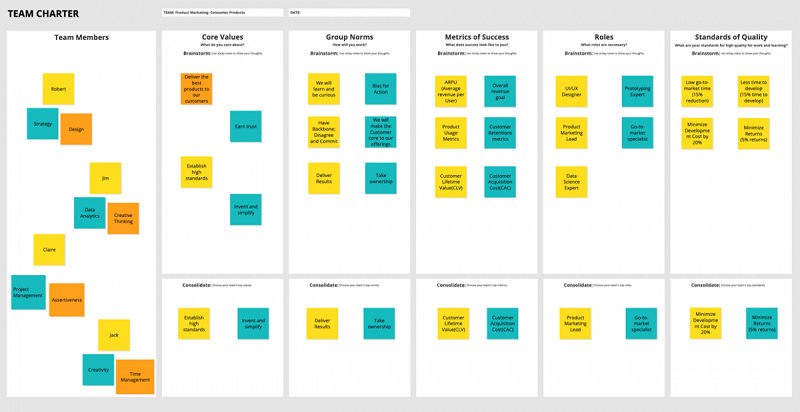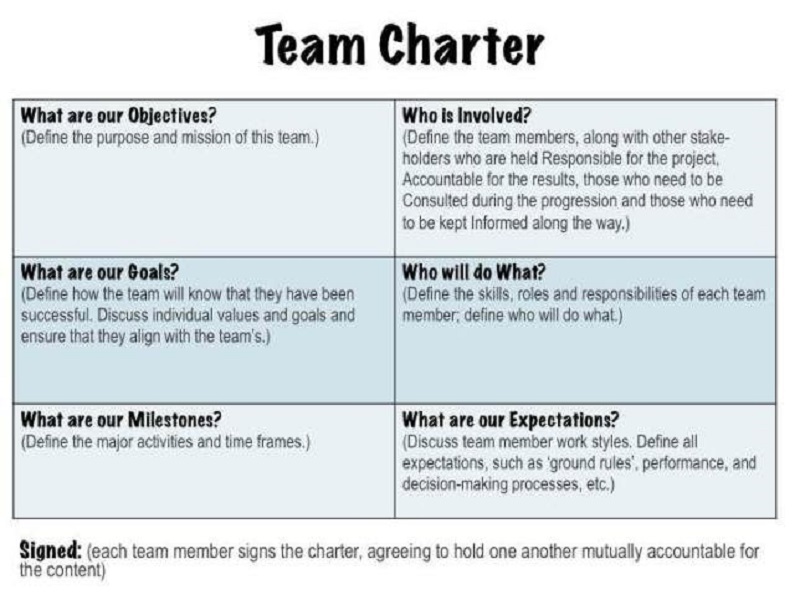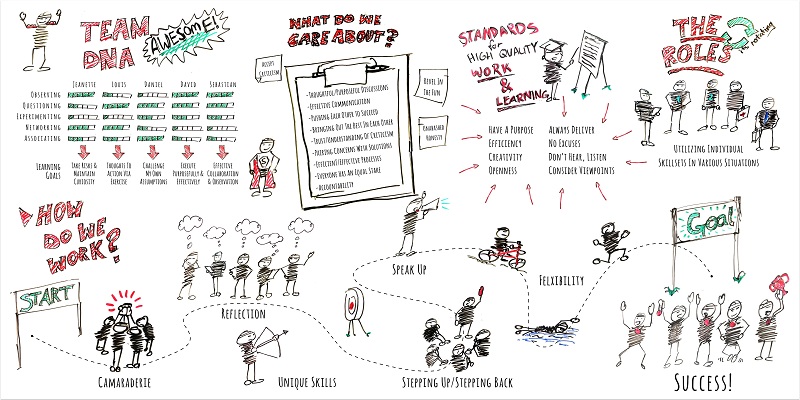Almost all of us will have been part of a team at some point during our lives, whether that be in or out of work, yet not everyone will have been fortunate enough to be part of a high performing team. Whilst a team may be full of highly skilled people, this alone is not enough to guarantee success. The process of developing a high-performance culture is gradual, and requires clear goals, trust and an understanding of each other’s strengths, limitations and motivators.
What is a team charter?
More often than not, the heart of the issue within teams is the assumption about roles, responsibilities and abilities which can lead to conflicts between individuals. This lack of clarity can breed an atmosphere of mistrust, resulting in an immovable block to any successful goal achievement for the team.
A team charter is a document that defines your team’s overall objectives, resources, and constraints. By ensuring your team has solid foundations from the beginning, you are far more likely to avoid such dysfunctions and instead grow into a team that consistently delivers results.
Read on to find out more about team charter's, their purpose and how to create one.
What is the purpose of a team charter?
The best time to put a team on the right track is when they're newly formed. But whether it's newly formed or well-established, it's never too late to enhance team working skills, commitment and performance.
A team charter is one of the most effective ways of setting a team up for success, and gives individual team members an understanding of the overall goal(s) of the team and the role they play, whilst also ensuring each person is kept focused and held accountable for living the values of the team.
A team charter can be used for any team, be it an executive team charter, leadership team charter or a sales team charter. As long as you follow the steps below correctly, it can be applied to any sort of team.
How to create a team charter: A framework
There are many variations of a team charter, with no ‘one size fits all’ approach. Whilst charters may vary for different teams and organisations, there are several components which should be included as a minimum.
At Thomas, we recommend using the following framework when developing your own team charter to ensure your people thrive in their teams, which positively impacts the wider organisational culture.
Mission
Your mission statement should be a succinct summary of why the team exists and what it hopes to achieve. The mission should clearly define the overarching goal of the team and is at the very core of the charter.
Purpose and objectives
What are the team’s goals? What are the key responsibilities of the team? Goals should be SMART (specific, measurable, achievable, relevant and time bound) so that progress can easily be tracked. Objectives can relate to both the team and the wider company.
Team composition
Include the names and job titles of every member of the team. Each team member who features should sign the completed charter to outline their commitment to the items and actions within it.
Strengths and limitations
What skills does the team have? Are there any gaps which need to be worked on? When evaluating strengths and limitations, think about more than just technical skills and consider soft skills which could relate to behaviours or emotions.
Values
What is important to each team member? How would you like other people to view your team? Values should become the foundation of the team and shouldn’t be compromised by any short-term project or scenario.
Commitments and expectations
How will you communicate with each other? How will you handle conflict? Do you have a preferred meeting etiquette? Short of making team charter rules, you need to ensure every team member buys into the team commitments and consider them when interacting with other team members and colleagues.
Once your team has completed the team charter, it's important to regularly refer to and review what was agreed to ensure the team is on track and achieving its goals. The charter needs to be embedded in the team and become part of their way of working. Try setting aside some time in monthly team meetings to review progress and make any necessary adjustments. If each team members feels like others are invested in upholding the commitments from the charter, you are more likely to foster an environment of trust - a key driver of high performing teams.
Team charter templates and examples
The exact format of a team charter can vary from team to team. Some are extremely granular, while others contain only top-level information.
Your team charter could be a Word document or it could be more visual, like a sketch. Any format is the best format, as long as it sets your team up for success.
Below are a few examples of team charter's you could use in your team. Websites such as TemplateLab have a number of off-the-shelf templates that are available to download.



Maximise your team's performance with Thomas
Our Guide to Leadership delves into the characteristics and skills of a good manager and provides handy tips on how to lead teams successfully with the help of our Workplace Personality assessment (HPTI) and Emotional Intelligence assessment (TEIQue).
We can help team leaders, managers and senior leadership teams maximise performance and achieve results with our team development solutions. Get in contact with one our team to find out more.




